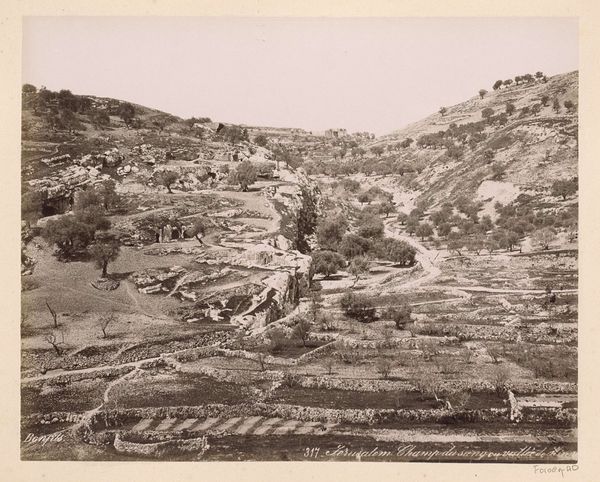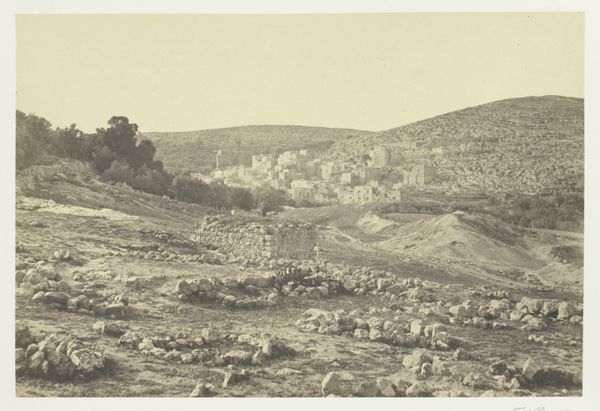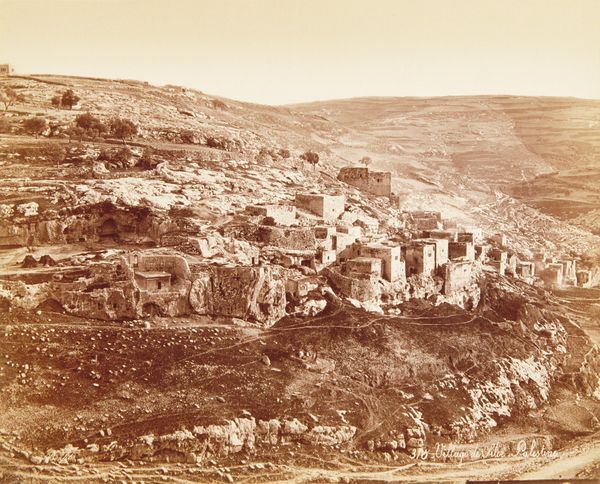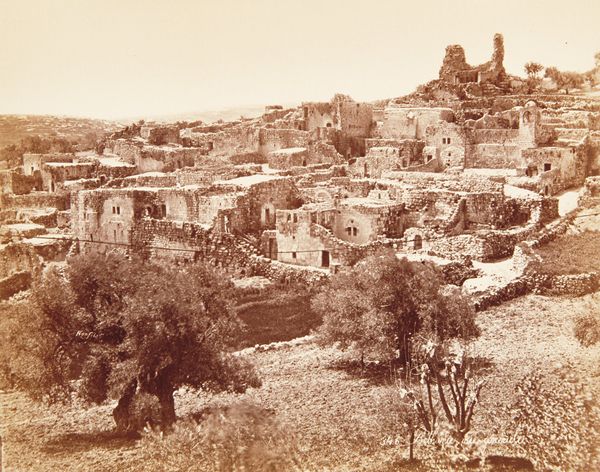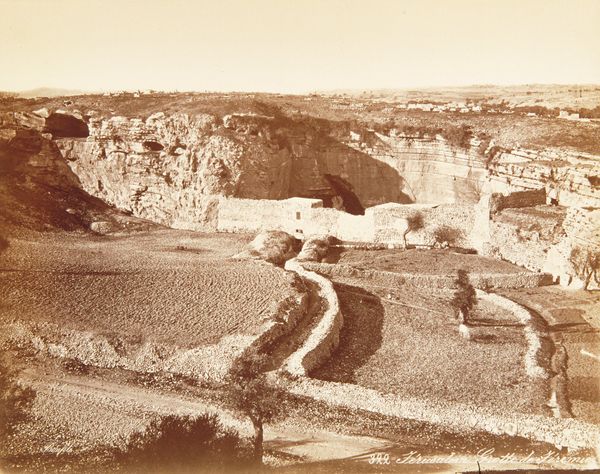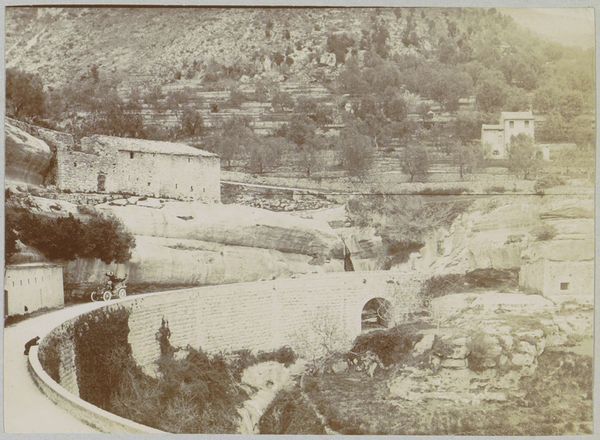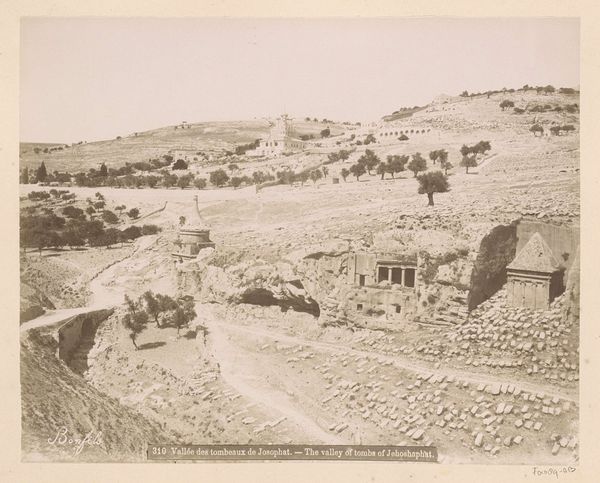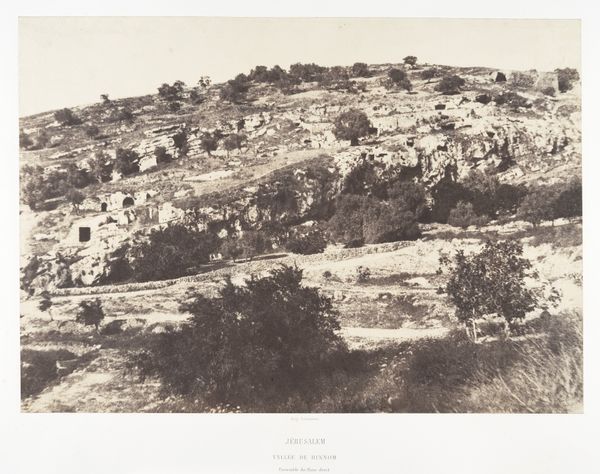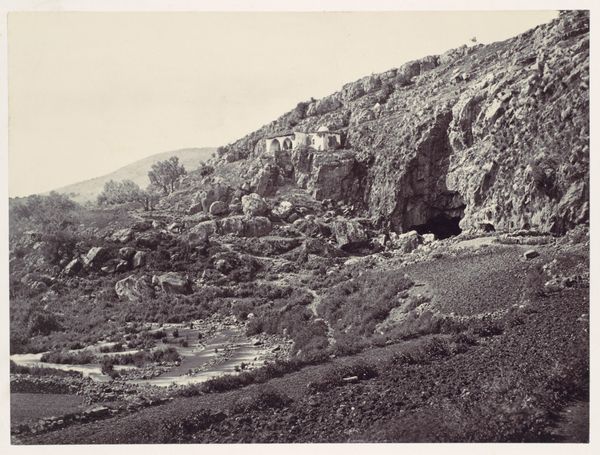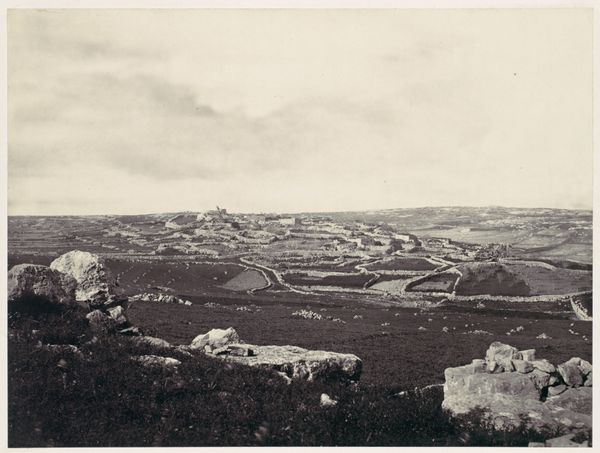
albumen-print, print, photography, albumen-print
#
albumen-print
# print
#
landscape
#
photography
#
landscape photography
#
orientalism
#
albumen-print
#
realism
Dimensions: 8 5/8 x 10 15/16 in. (21.91 x 27.78 cm) (image)11 x 14 in. (27.94 x 35.56 cm) (mount)
Copyright: Public Domain
Curator: This albumen print, simply titled "Untitled," comes to us from the 1870s and is credited to Félix Bonfils. Editor: My immediate reaction is that this is a study in texture. Look at the earth and the varied methods humans have implemented to make it arable. Curator: Absolutely. The meticulous detail offered by the albumen printing process really allows for an intense consideration of the terrain. Note how the composition utilizes these terraced fields to draw the eye back into the distance. The landscape seems almost sculpted by hand, an intersection of the natural world and intensive agricultural labor. Editor: I'm especially drawn to how those lower fields seem cordoned off. What materials were readily available and what dictated how a space could be made? I imagine it all comes down to localized knowledge. I wonder what these early photographs did in service of creating particular perspectives, specifically, colonial ideas around the Orient. How were these terrains altered, changed by new inhabitants who consumed the products? Curator: Precisely. Bonfils' work, like much Orientalist art of the period, invites a semiotic reading—we see not just a landscape, but a constructed representation of the East for a Western audience. The hazy light, the almost idyllic framing… it all contributes to a carefully curated vision. The tonality reminds one of an aged, sepia-toned dream, perhaps even exoticizing this location for viewers unfamiliar with it. Editor: Yes, and I can’t help but think about the manual labor inherent in constructing the photographic image itself: the preparing of the glass plates, the darkroom chemistry. What kinds of access allowed this individual to move equipment in and out of spaces? I mean, thinking of the conditions required to render these landscapes...it’s incredibly important to realize what kinds of manual processes are happening behind the scenes here. Curator: Considering the interplay of light and shadow, the dynamic visual elements, provides significant insight. The artist draws our attention to specific arrangements by implementing various compositional strategies. Editor: Analyzing it in terms of its physical existence—the print itself—illuminates all sorts of forgotten labor processes, both in front of and behind the lens. I'm fascinated by that tangible connection to a specific historical moment and what has become of this site through time.
Comments
No comments
Be the first to comment and join the conversation on the ultimate creative platform.
